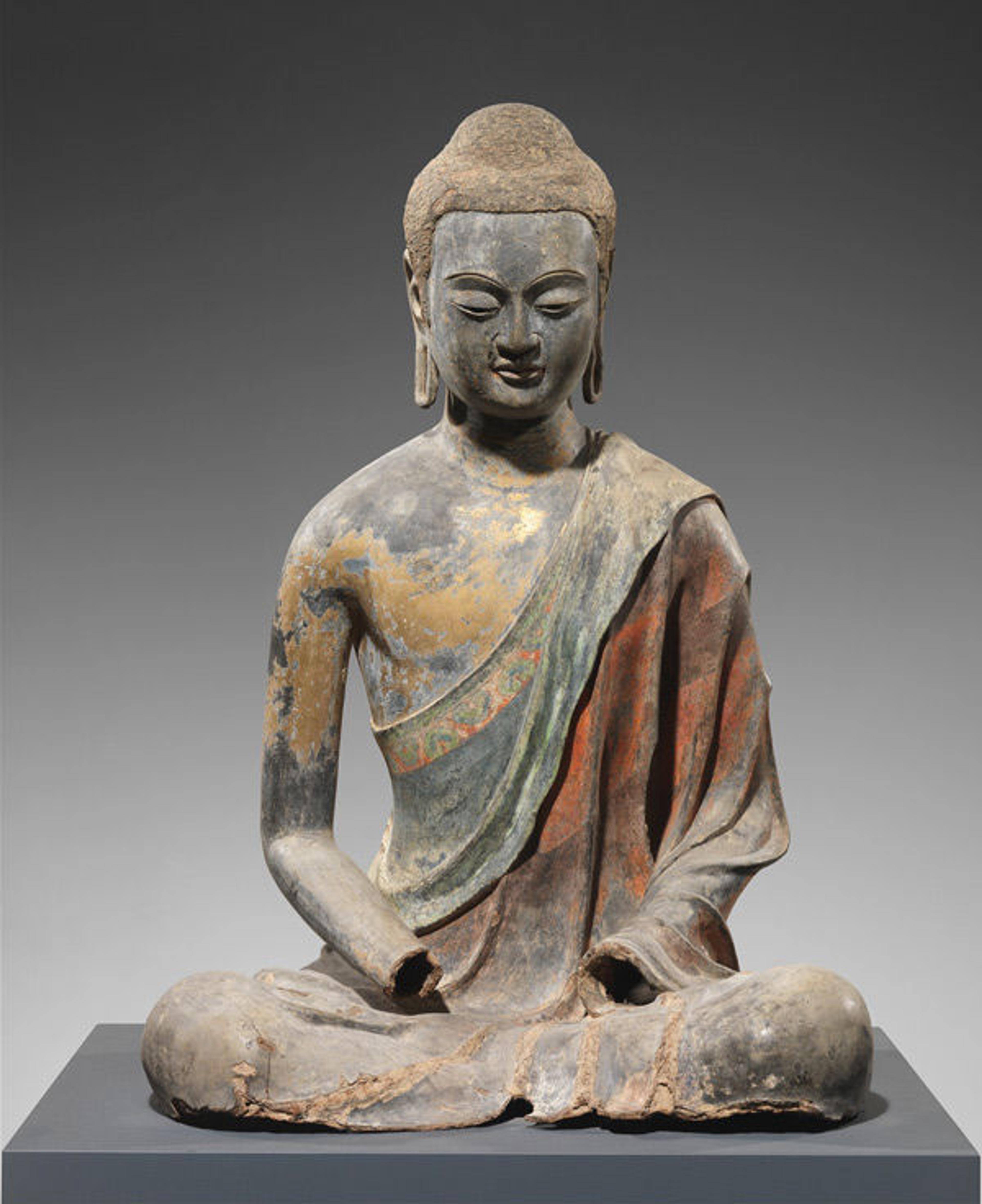A Sanctuary at the Met

Buddha, Probably Amitabha, early 7th century. Tang dynasty (618–907). China. Hollow dry lacquer with traces of gilt and polychrome pigments. The Metropolitan Museum of Art, New York, Rogers Fund, 1919 (19.186)
«The last time I was wandering around the Met, I heard four successive "Wows!" exclaimed by awestruck museumgoers as they entered gallery 206, the entrance to the Asian Art galleries. This comes as no surprise to me, as the impressive thirteen-foot-high statue of the Avalokiteshvara Bodhisattva that sits in the gallery is stunningly amazing. The entire gallery is quite remarkable. However, what I feel is truly amazing about this part of the Museum is the immediate quietness and tranquility one encounters when they walk up the steps into the smaller galleries that make up the wing.»
I am always struck by gallery 208; its shape, high ceilings, and natural light always evoke the feeling of some type of sanctuary. This gallery, which is a sculpture court, is home to some of my favorite pieces of Asian art, including the Liao Dynasty's powerful Bodhisattva Avalokiteshva in "Water Moon" Form (Shuiyue Guanyin) and the Northern Wei Dynasty's joyful Buddha Maitreya (Mile fo).
My favorite work of this gallery is the Tang Dynasty's Buddha, Probably Amitabha, shown above. This beautiful statue sits almost centered in the room and is ethereally lit with sunlight from the skylight above. This Buddha's smile casts a peacefulness that envelopes the entire room. I'll sometimes sit on the benches watching him for some time, trying to absorb just an ounce of the endless positivity that he exudes.
What pieces of art help you reflect?
Hannah undefined
Hannah was formerly an intern with the Museum's High School Internship Program.